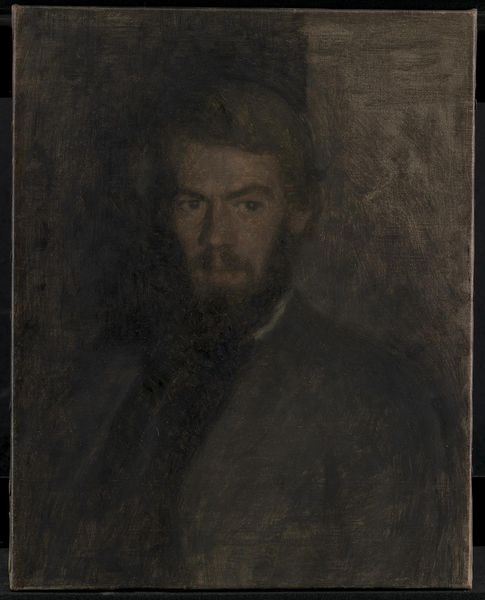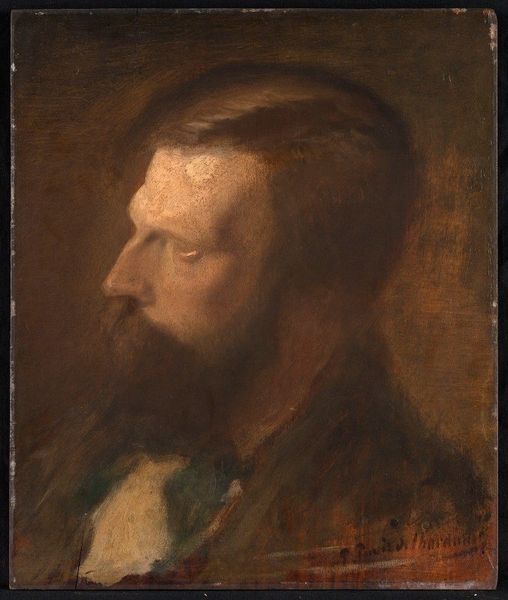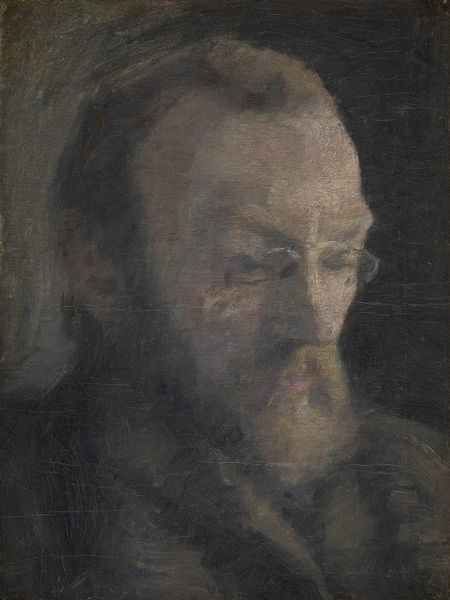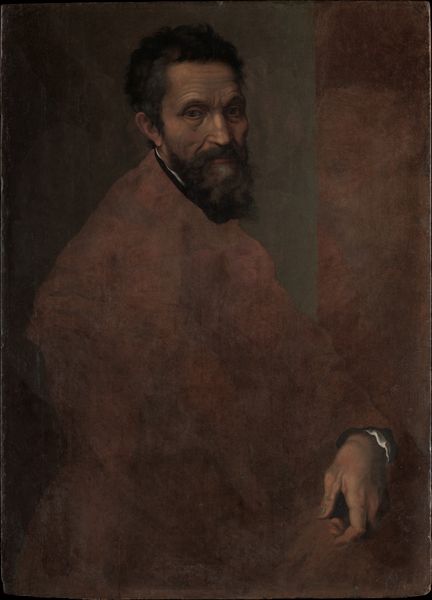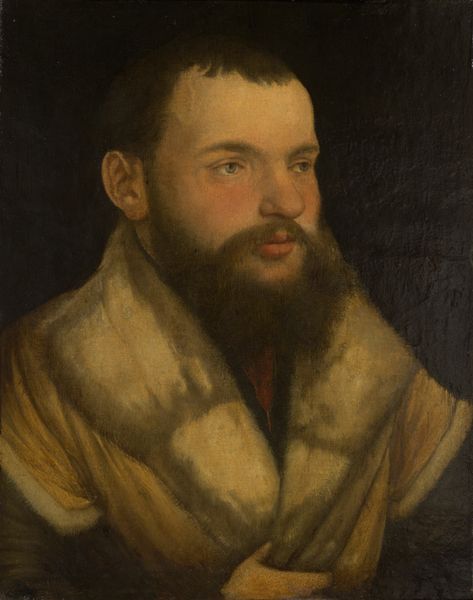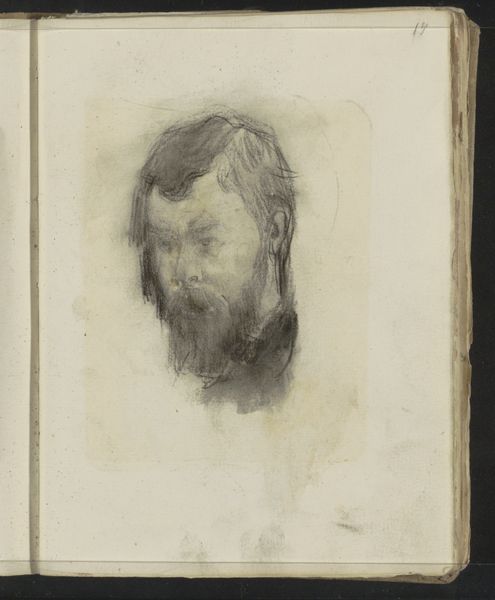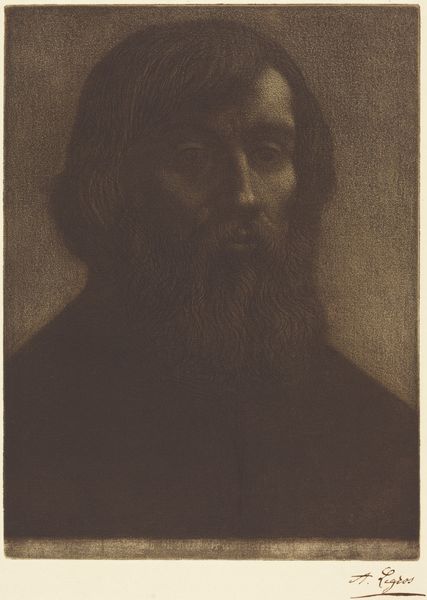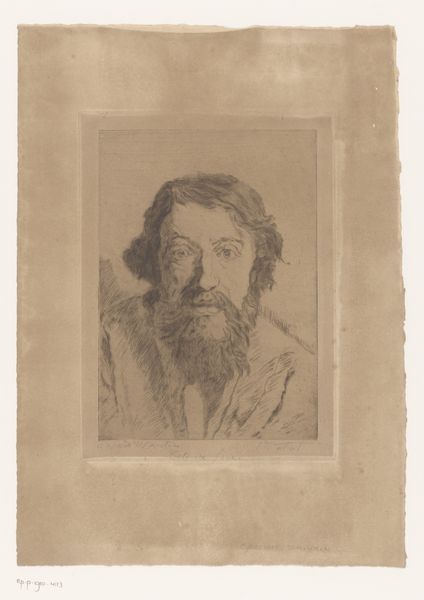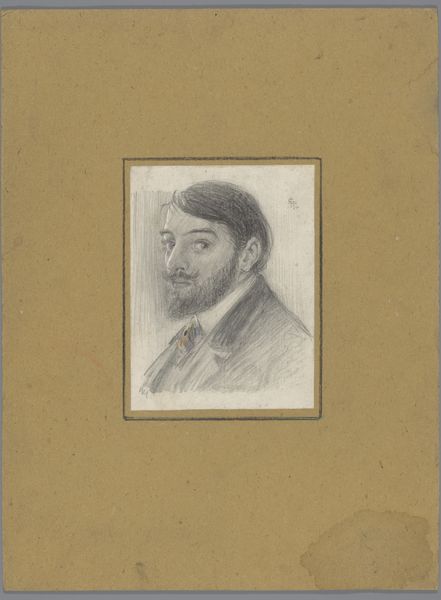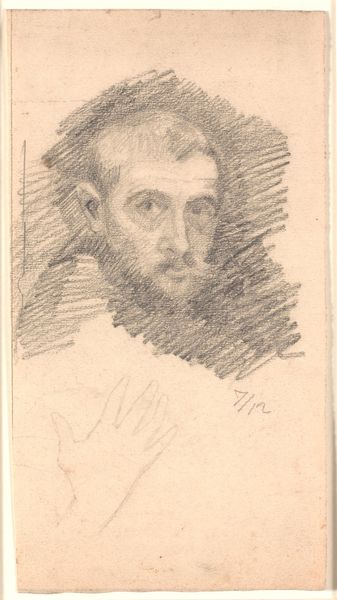
Dimensions: 27 cm (height) x 21.5 cm (width) (Netto)
Editor: This is Vilhelm Hammershøi's "Henry Madsen," painted in 1904. It's an oil on canvas, and the portrait has a distinctly muted, almost melancholic feel. What elements of the composition strike you? Curator: The subdued palette is immediately apparent. Note how Hammershøi limits his range—essentially variations on gray and brown. The figure nearly dissolves into the background, a deliberate choice that emphasizes the picture plane itself. What does that evoke for you? Editor: A kind of quietness, a visual stillness, and also the rough application of oil paint that I wouldn't expect. Curator: Precisely. The brushstrokes are not blended to create smooth transitions but remain visible, disrupting any illusion of depth. The structural integrity, where tones, composition and raw paint contribute to its whole presence. Editor: I guess I'm used to portraits with higher contrast, sharper lines and a more commanding presence. Curator: Perhaps, but observe how this contributes to its overall effect. The sitter isn't projecting an outward persona. It is much more reflective than presentational. There’s an emphasis on surface, on the qualities of the paint itself. In a formalist reading, this becomes its most compelling feature, transcending likeness. Editor: So you are saying that the 'failure' of portraiture is what makes it succeed, in terms of form? Curator: In a way. This de-emphasis suggests Hammershøi’s focus extended far beyond the simple recording of a likeness. He masterfully used formal devices to evoke interiority, an artistic triumph to those, who recognize a well-studied visual execution. Editor: I never thought about it that way. The way it's painted becomes as important as who it is painted *of*. Curator: Precisely. Hammershøi encourages us to focus on how art is composed of constituent parts. The result makes the viewer really stop and *look* and in effect the portrait does reveal a reality far exceeding the basic facial structure it represents.
Comments
No comments
Be the first to comment and join the conversation on the ultimate creative platform.
